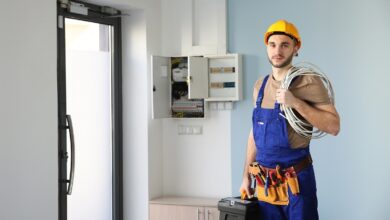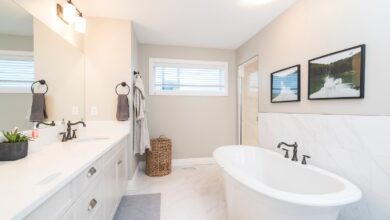Office Interior Design: Revolutionizing Workspaces for Maximum Impact
In today’s competitive business landscape, office interior design plays a pivotal role in enhancing productivity, fostering creativity, and promoting employee well-being. The right design can transform a workspace into an inspiring environment that aligns with a company’s goals and values. This article delves into the essential elements, emerging trends, and actionable tips for creating office interiors that drive success.
The Importance of Office Interior Design
Boosting Productivity
An effective office design is instrumental in maximizing employee productivity.
- Ergonomic Solutions: Ergonomic furniture minimizes physical strain, improving comfort and efficiency.
- Optimized Layouts: Thoughtful layouts reduce distractions and streamline workflow.
Encouraging Collaboration
Spaces designed for collaboration can lead to greater innovation and teamwork.
- Open Spaces: Open-plan offices encourage spontaneous interactions and teamwork.
- Collaborative Zones: Designated areas equipped for group work and brainstorming sessions enhance collaborative efforts.
Enhancing Employee Well-being
Prioritizing well-being in office design can lead to happier, healthier employees.
- Natural Light: Abundant natural light boosts mood and energy levels.
- Biophilic Elements: Incorporating nature through plants and natural materials creates a calming atmosphere.
Core Elements of Office Interior Design
Space Planning
Effective space planning is the foundation of a functional and efficient office.
- Zoning: Divide the office into distinct zones for different activities like focused work, meetings, and relaxation.
- Flow and Accessibility: Ensure a logical flow between zones to facilitate easy movement and access.
Ergonomics and Comfort
Ergonomic and comfortable furniture is key to maintaining high productivity levels.
- Adjustable Furniture: Provide adjustable desks and chairs to cater to individual needs.
- Balanced Lighting: Combine natural and artificial lighting to reduce eye strain and create a comfortable work environment.
Acoustics
Managing noise levels is essential for maintaining a productive office environment.
- Acoustic Panels: Use panels to absorb sound and reduce noise pollution.
- Quiet Areas: Create quiet zones for tasks that require intense focus.
Aesthetics and Branding
The office design should reflect the company’s brand and culture.
- Color Schemes: Use the company’s color palette to create a cohesive look.
- Brand Integration: Incorporate logos and other brand elements into the design.
Sustainability
Sustainable design practices are increasingly important for modern offices.
- Eco-Friendly Materials: Use sustainable materials like recycled wood and low-VOC paints.
- Energy Efficiency: Implement energy-efficient systems such as LED lighting and smart thermostats.
Trends in Office Interior Design
Biophilic Design
Biophilic design integrates natural elements into the office, enhancing well-being and creativity.
- Greenery: Incorporate indoor plants to improve air quality and create a relaxing atmosphere.
- Natural Materials: Use materials like wood, stone, and bamboo for a natural touch.
Flexible and Adaptive Spaces
Flexibility is crucial for accommodating changing work needs.
- Modular Furniture: Choose furniture that can be reconfigured for different uses.
- Multi-Purpose Areas: Design areas that serve multiple functions, such as lounges that double as meeting spaces.
Technology Integration
Seamless technology integration enhances productivity and connectivity.
- Smart Systems: Implement smart lighting, climate control, and security systems.
- Collaboration Tools: Equip meeting rooms with advanced technology for video conferencing and digital collaboration.
Wellness-Focused Design
Designing with wellness in mind promotes employee satisfaction and performance.
- Wellness Rooms: Create spaces for relaxation and wellness activities.
- Healthy Amenities: Provide healthy snacks and beverages in break areas.
Best Practices for Office Interior Design
Employee Involvement
Engaging employees in the design process ensures the space meets their needs.
- Surveys and Feedback: Collect input from employees to understand their preferences.
- Design Workshops: Hold workshops to gather ideas and suggestions from employees.
Flexibility and Adaptability
Design the office to be flexible and adaptable to future needs.
- Modular Design: Use modular furniture and movable walls for adaptable spaces.
- Scalable Solutions: Implement scalable solutions that can grow with the company.
Comfort and Well-Being
Prioritizing comfort and well-being is essential for a productive work environment.
- Ergonomic Furniture: Invest in ergonomic furniture to support physical health.
- Wellness Areas: Designate spaces for relaxation and wellness activities.
Seamless Technology Integration
Integrate technology to enhance efficiency and productivity.
- Smart Office Solutions: Use smart systems for automated lighting and temperature control.
- Collaboration Tools: Equip the office with tools to support remote work and communication.
Reflecting Brand Identity
Ensure the office design reflects the company’s brand and culture.
- Brand Colors and Elements: Use brand colors and elements in the design.
- Unique Touches: Add unique decor to reinforce the company’s identity.
Case Studies: Innovative Office Designs
Tech Startup
A tech startup redesigned its office to support a flexible, hybrid work model. The design included modular furniture, multipurpose areas, and advanced technology integration. Biophilic elements such as indoor plants and natural light were used to enhance well-being. The office also featured wellness amenities like a yoga studio and relaxation spaces.
Corporate Headquarters
A corporate headquarters focused on sustainability and inclusivity. The design used eco-friendly materials and energy-efficient systems. Universal design principles ensured accessibility for all employees, with features such as adjustable workstations and clear wayfinding. The office celebrated diversity with cultural elements and inclusive facilities.
Creative Agency
A creative agency created an inspiring workspace to foster collaboration and innovation. Open collaboration areas with flexible seating encouraged spontaneous discussions. Private offices and phone booths provided spaces for focused work and private calls. Biophilic design elements, including green walls and natural materials, created a calming atmosphere.
Conclusion
Office interior design is a crucial factor in creating workspaces that are functional, efficient, and inspiring. By focusing on key elements such as space planning, ergonomics, acoustics, aesthetics, and sustainability, and incorporating the latest trends in biophilic design, flexibility, technology integration, and wellness, businesses can create environments that enhance productivity, foster collaboration, and promote well-being. Whether designing a new office or updating an existing space, these strategies can help create a modern, efficient, and inspiring work environment.



